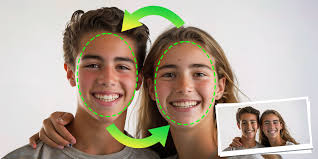
The Rise of Deepfake Video Makers: What You Need to Know
In today’s digital age, technology continues to advance at a rapid pace. One of the latest advancements that has been making headlines is the rise of deepfake video makers. These sophisticated tools allow users to create videos that manipulate and alter existing footage to make it appear as though someone is saying or doing something they never actually did. While this technology can be used for entertainment purposes, it also raises concerns about the spread of misinformation and fake news. In this blog post, we will delve into the world of deepfake video makers, exploring how they work and their potential impact on society.
deepfake video maker utilize artificial intelligence algorithms to superimpose images and audio onto existing video footage, creating realistic-looking videos that can be difficult to distinguish from reality. These tools have become increasingly accessible and user-friendly, allowing almost anyone with a computer and an internet connection to create convincing deepfake videos. While some may see this technology as a fun way to create entertaining content, others are concerned about its potential for misuse.
The ability to create realistic-looking videos of public figures saying or doing things they never actually did raises serious ethical concerns. Deepfake videos have the potential to spread false information and manipulate public opinion. For example, imagine a deepfake video of a political leader making inflammatory remarks going viral on social media, leading to widespread outrage and unrest. As deepfake technology becomes more advanced, it is crucial for individuals to critically evaluate the authenticity of the content they consume online.
In addition to the ethical implications of deepfake video makers, there are also legal concerns surrounding their use. In many jurisdictions, creating and distributing deepfake videos without consent is illegal and can result in serious consequences. Furthermore, victims of deepfake videos may suffer reputational damage or emotional distress as a result of false information being circulated about them. As such, lawmakers are grappling with how best to regulate this emerging technology in order to protect individuals’ rights and prevent its misuse.
Despite the potential risks associated with deepfake video makers, there are also positive applications for this technology. For example, filmmakers could use deepfakes to bring deceased actors back to life in movies or television shows. Additionally, researchers could use deepfakes in simulations for training purposes or studying human behavior. However, it is important for users of these tools to exercise caution and responsibility when creating and sharing content online.
Conclusion: The rise of deepfake video makers represents a double-edged sword in today’s digital landscape. While these tools offer exciting possibilities for entertainment and research purposes, they also pose significant risks in terms of spreading misinformation and violating individuals’ privacy rights. As this technology continues to evolve, it is imperative for society as a whole – from lawmakers to tech companies to individual users – to engage in thoughtful discussions about how best to navigate this new frontier responsibly.



